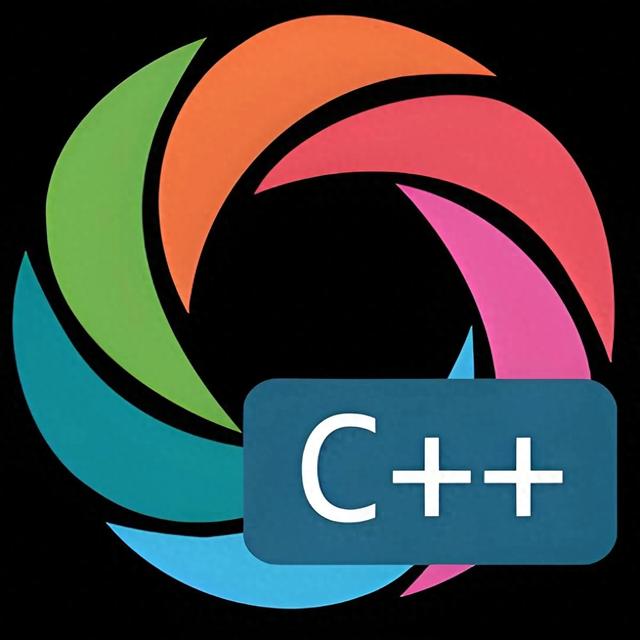你有沒有想過,那些複雜的科學計算和圖形渲染任務是如何在短時間內完成的?C++,這門強大的編程語言,在高性能計算領域究竟隱藏著怎樣的潛力?本文將深入探討C++高性能計算的技術精髓,並帶你領略從並行算法到GPU加速的全過程。文章將結合代碼片段,爲你揭示C++高性能計算的奧秘。

1. 高性能計算基礎
高性能計算(High-Performance Computing,HPC)是指使用超級計算機、計算機集群等高性能硬件系統來解決問題的計算方式。在C++中,高性能計算通常依賴于並行編程和特定硬件優化。
1.1 並行編程
並行編程是一種編程範式,它允許程序同時執行多個任務,以提高性能和效率。C++11引入了std::thread和std::async,使得並行編程變得更加容易。
#include <iostream>#include <thread>#include <vector>void print_message(std::string message) { std::cout << message << std::endl;}int main() { std::vector<std::thread> threads; for (int i = 0; i < 10; ++i) { threads.push_back(std::thread(print_message, "Hello, World!")); } for (auto& thread : threads) { thread.join(); } return 0;}在上面的代碼中,我們創建了10個線程,它們同時執行print_message函數。
2. C++高性能計算革命
隨著多核處理器和GPU的普及,C++在高性能計算領域的應用變得越來越廣泛。C++提供了多種機制來支持並行和向量化的計算。
2.1 OpenMP
OpenMP是一個開源的API,用于並行編程。它支持多線程並行,可以輕松地擴展C++程序以利用多核處理器。
#include <iostream>#include <omp.h>int main() { int n = 10; std::vector<int> data(n); #pragma omp parallel for for (int i = 0; i < n; ++i) { data[i] = i * i; } for (int i = 0; i < n; ++i) { std::cout << data[i] << " "; } std::cout << std::endl; return 0;}在上面的代碼中,我們使用OpenMP並行化了一個簡單的for循環。
2.2 CUDA
CUDA是NVIDIA推出的一個平行計算平台和編程模型,它允許開發者使用NVIDIA GPU進行通用計算。
#include <iostream>#include <vector>#include <cuda_runtime.h>__global__ void vector_add(int* out, int* a, int* b, int n) { int index = threadIdx.x + blockIdx.x * blockDim.x; if (index < n) { out[index] = a[index] + b[index]; }}int main() { int n = 1024; std::vector<int> h_a(n), h_b(n), h_out(n); // 初始化輸入向量 for (int i = 0; i < n; ++i) { h_a[i] = i; h_b[i] = i; } int* d_a, * d_b, * d_out; cudaMalloc(&d_a, n * sizeof(int)); cudaMalloc(&d_b, n * sizeof(int)); cudaMalloc(&d_out, n * sizeof(int)); cudaMemcpy(d_a, h_a.data(), n * sizeof(int), cudaMemcpyHostToDevice); cudaMemcpy(d_b, h_b.data(), n * sizeof(int), cudaMemcpyHostToDevice); dim3 blockDim(256, 1, 1); dim3 gridDim((n + blockDim.x - 1) / blockDim.x, 1, 1); vector_add<<<gridDim, blockDim>>>(d_out, d_a, d_b, n); cudaMemcpy(h_out.data(), d_out, n * sizeof(int), cudaMemcpyDeviceToHost); for (int i = 0; i < n; ++i) { std::cout << h_out[i] << " "; } std::cout << std::endl; cudaFree(d_a); cudaFree(d_b); cudaFree(d_out); return 0;}在上面的代碼中,我們使用CUDA在GPU上執行向量加法。
3. 並行算法設計
在設計並行算法時,需要考慮數據分割、負載均衡和同步等問題。
3.1 並行排序算法
例如,並行快速排序算法可以通過遞歸地將數據分割爲更小的部分,並在多個線程上並行排序來提高性能。
4. 總結
本文深入探討了C++高性能計算的技術精髓,從並行算法到GPU加速,爲你揭示了C++在高性能計算領域的潛力。C++提供了多種機制來支持並行和向量化的計算,包括OpenMP和CUDA。掌握這些技術,你將能夠在C++中高效地開發高性能計算應用。
